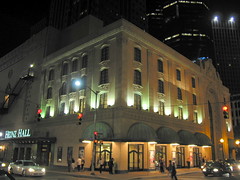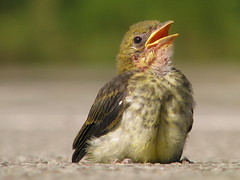The Legacy of Stradivarius comes to life as never before at the Musical Instrument Museum
On display for the first and only time in the US
PHOENIX (Dec. 8, 2015) – Opening January 16, as part of its five-year anniversary celebration, the
Musical Instrument Museum (MIM) will bring to Arizona
Stradivarius: Origins and Legacy of the Greatest Violin Maker.
Violins, an internationally beloved instrument, will be the star of this
new exhibition, which showcases 10 exceptional historic and modern
examples from the string family, including a 1728
Stradivarius violin on public display for the first time in the United
States.
On view only at MIM, this one-of-a-kind exhibition
introduces the story of how early violin makers from the modest Italian
city of Cremona shaped music from the 16th century onward. These
timeless masterpieces were handcrafted by master
luthiers, including Andrea Amati, the founding father of the violin;
the rogue genius Guarneri del Gesù; and the master himself—Antonio
Stradivari. The exhibition includes several modern-day masterworks that
demonstrate the continuing influence of early masters.
Stradivarius: Origins and Legacy of the Greatest Violin Maker is presented in partnership with Cremona-based institutions
Museo del Violino and the
Friends of Stradivari. “Since its inception, MIM has collaborated
with prestigious national and international institutions that share a
similar vision,” said April Salomon, executive director of MIM. “Now for
the first time, MIM has the great privilege
to bring this extraordinary exhibition to Arizona, allowing us to share
these remarkable instruments with guests from around the world.”
The exhibition, featured in MIM’s Target Gallery,
will allow guests to hear and see the instruments on display using audio
and video technology that will bring the violin to life as never
before. “We have transformed the exhibition space
into a multi-sensory experience complete with compelling sound and
visuals,” says Kathleen Wiens, PhD, MIM’s curator for Europe. Wiens
continues, “When visitors walk into the gallery, they will be taken on a
journey from the Fiemme Valley forest, where the
early masters sourced their wood, through violin maker’s workshops,
European royal courts, science labs and finally to the thrilling concert
stage. It will be an experience like no other.”
Visitors to this exhibition will have the rare
opportunity to see firsthand the fine craftsmanship of these
extraordinary treasures. Similar violins have garnered increased
attention on the collectors’ market and most recently the “Lady
Blunt” Stradivarius was purchased for more than $15 million US dollars.
In addition to appreciating their value, visitors will discover what
makes these prized instruments unique, both in design and tone.
Stradivarius: Origins and Legacy of the Greatest Violin Maker will be on display through June 5, 2016, with special
opening weekend activities taking place January 16 and 17.
To commemorate the exhibition, MIM will host concerts featuring some of
the world’s most talented violinists—compelling virtuosa
Rachel Barton Pine, foremost jazz violinist of her generation
Regina Carter, champion of American music
Mark O’Connor, and the incomparable
Midori. The concert series will conclude with treasured instruments
of the Valley brought to life by members of the exceptionally talented
ASU Strings Faculty. As a finale to this special exhibition, MIM will have an “Experience Italy” weekend June 4 and 5 to celebrate Italian music and culture.
Admission
$10 for Stradivarius: Origins and Legacy of the Greatest Violin Maker exhibition only
$7 when purchased with general museum admission
The Musical Instrument Museum is located at 4725 E.
Mayo Boulevard in Phoenix (corner of Tatum and Mayo Boulevards, just
south of Loop 101). For general museum information and a full schedule
of events, visit MIM.org or call 480.478.6000.
***
About MIM
The Musical Instrument Museum (MIM) enriches our
world by collecting, preserving and making accessible an astonishing
variety of musical instruments and performance videos from every country
in the world. MIM offers guests a welcoming and
fun experience, incomparable interactive technology, dynamic
programming and exceptional musical performances. MIM fosters
appreciation of the world’s diverse cultures by showing how we innovate,
adapt and learn from each other to create music—the language
of the soul.
Find MIM on Facebook: Facebook.com/MIMphx
Follow MIM on Twitter: @MIMphx #MadForStrad
Subscribe to MIM on YouTube: YouTube.com/MIMphx





































